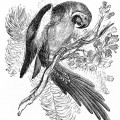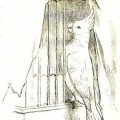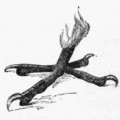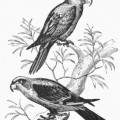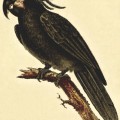As I child I learned that the dinosaurs and a number of other creatures no longer inhabit the earth. Since working on Reusable Art, the list of birds, animals and plants that I am finding are no longer with us is sadly growing. This beautiful parrot, known as an ara tricolor now joins that list.
I found this colorful book plate in an 1822 natural history dictionary from France. Jean Baptiste Geneviève Marcellin (1778-1846) did not say much about this colorful parrot other than they grew to 20 inches long, a relatively small size for a macaw.
As the name suggests, these birds were native to Cuba. Habitat destruction was caused by the pet trade. They would cut down the nesting trees to get to the nestlets with little regard to the destruction they caused to the breeding areas and the deaths of immature birds. Hurricanes in the 1840s and 1850s are said to have split the populations and perhaps made them more vulnerable to humans.
The Cuban macaw was a quite colorful parrot. They had bright red-orange breasts and tail feathers. A sunny patch of yellow was on the back of their necks and on the central part of their beaks. Their wing feathers were a dark blueish green with the tops being more brownish in color.
Through vintage art like this Cuban macaw drawing and a handful of museum specimens we can see these birds and hopefully be more mindful of how we humans can impact other species.
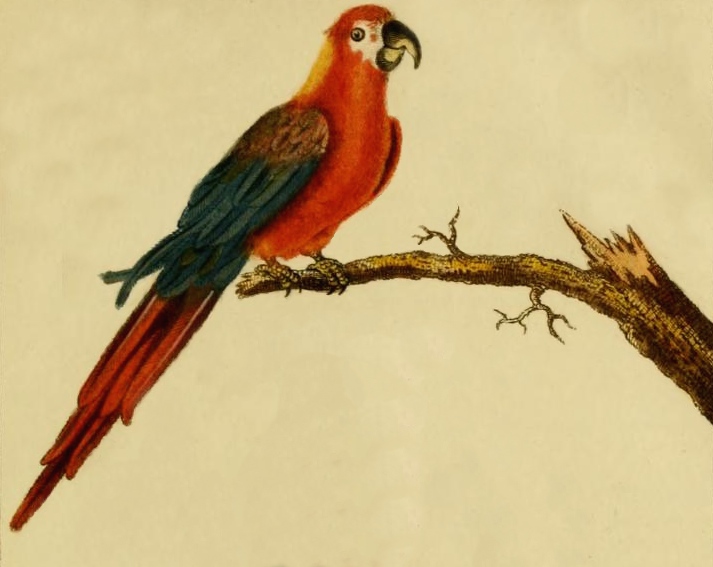
This image is copyright free and in the public domain anywhere that extends copyrights 70 years after death or at least 120 years after publication when the original illustrator is unknown.
